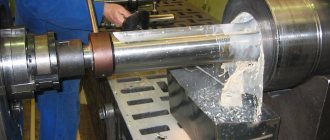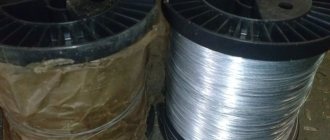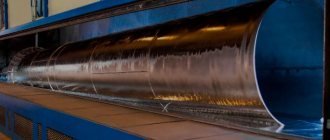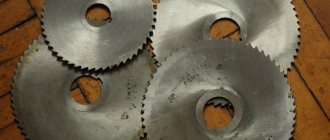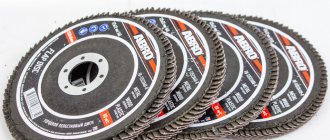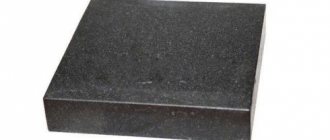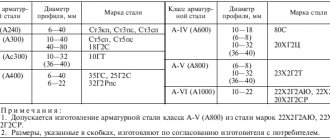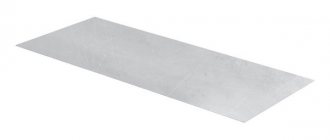Buy GOST 5210-67 - paper document
with hologram and blue seals. more details
We have been distributing regulatory documents since 1999. We punch checks, pay taxes, accept all legal forms of payment without additional interest. Our clients are protected by law. LLC "CNTI Normocontrol"
Our prices are lower than other places because we work directly with document providers.
Delivery methods
- Express courier delivery (1-3 days)
- Courier delivery (7 days)
- Pickup from the Moscow office
- Russian Post
Applies to hot-rolled steel of special profiles intended for the manufacture of files, rasps, chisels and cross-cuts.
Replacement data is published in UGS 4-84
Types of files for metal
A file is a special cutting tool widely used in various industries. Externally, it is a steel bar of large or medium length with a wooden, plastic or rubberized handle attached to the base. It is necessary to provide the worker with comfort when working with the tool and reduce the risk of occupational injuries.
The body of the file is made of a special grade of steel, which allows the tool to interact with metal objects. The tail part of the steel beam is covered with a special pattern called excision. The nature and type of work performed will depend on the shape and size of the notch.
Processing of metal parts occurs through gradual grinding of layers with a tool until the product is given the required shape. The main thing is that the metal cutting part is selected for its intended purpose.
File shapes
The geometric shape of a metal file determines its scope of application in the production and processing of products:
- flat or flat pointed: processing flat metal parts, as well as smooth surfaces;
- square: necessary for cutting and forming technical holes of various polygonal shapes;
- triangular triangular: using such a metal cutting tool, you can polish, process and clean gaps, grooves and other manufacturing holes;
- semicircular: excellent for various types of processing of curved concave surfaces;
- round: used for sharpening and processing round or oval concave surfaces with a small radius of curvature;
- rhombic: processing of metal parts with teeth;
- hacksaw: a tool for sharpening narrow gaps, holes and other small parts.
In practice, round, triangular and flat files are most often used, since some of them can perform the functions of other tool shapes.
Types of files
The type of metal processing tool is determined based on its intended purpose:
- General purpose metal cutters. They are commonly used in plumbing. The tail part is made in the form of two jagged notches, which are superimposed on each other: their length can vary from 1 to 4.5 cm and can be combined with teeth of all sizes.
- Metal cutters for special purposes. They are necessary in the industrial sector, since their main task is to eliminate deviations and adjust small parts, grooves and surfaces of different radii of curvature. This type of tool has many varieties, which are selected based on the nature of the work performed: double-ended, flat, one-time and others.
- Needle files. This group of metal files includes the largest number of types. The ends of steel beams come in all possible geometric shapes, and the beam itself, as a rule, is not very long. Flat, round, hacksaw and all other types of needle files are characterized by the presence of a class 5 notch. Needles are used for processing small metal parts that coarser and more massive metalwork tools cannot handle.
- Rasps. Rasps differ from all other types of files by the particularly long part of the steel bar and large teeth on the tail. There are 3 main types of such tools: metal shoe cutters, hoof cutters and general purpose rasp files. The shape of the instrument is predominantly round and semicircular with an end of varying degrees of sharpness.
Read also: Cleaners 220V electric motor speed controller
Types of notches and their geometry
In order to perform quality work as a metal carver, it is necessary to determine the required type of notch. The structure and size of the teeth are also of great importance when choosing a tool.
Steel teeth can be applied to the tail of a steel bar in different ways:
The most widely used in the field of processing metal products are metal cutters, the teeth of which are made by cutting them on special automated machines. Moreover, the notches themselves can be either double or single.
A notch with one end is designed to remove excess metal, which is equal in size to its teeth. That is why this type of tool is suitable for sharpening more pliable materials: wood, plastic and softer types of metal.
Double consists of two notches, one of which is the main one, and the second is auxiliary. The notches are located at a special angle relative to each other, which allows sharpening of hard materials (metals and their alloys).
The tooth geometry of files will depend on the number of notches on the body of the steel bar.
The fewer notches there are on the body of the steel bar, the larger the teeth will be.
Classification of tools by shape
The processed parts have different shapes. To effectively work with such products, appropriate types of files are provided. They differ from each other in profile shape (cross section). The following types of files are distinguished:
- flat;
- square;
- trihedral;
- round;
- semicircular;
- special;
- knife-shaped or hacksaw;
- diamond-shaped;
- oval file.
What types of instruments there are are briefly outlined above. What are they for?
Numbering of notches and types of work
Based on the size of the teeth, the notches are divided into 5 classes:
| Class No. | Layer of material to be removed | Characteristic |
| 0-1 | 0.05 to 0.1 mm | The largest type of notches is inconvenient because when processing metal ones, errors of 0.1 to 0.2 mm are likely |
| 2-3 | 0.02 to 0.06 mm | The best option for removing a layer of metal, but protecting grooves and holes can be difficult |
| 4-5 | 0.01 to 0.03 mm | Notches with teeth N 4 and 5 are used for finishing parts and subordinating grooves and holes. Maximum error allowed during operation – 0.001 – 0.005 mm |
In addition to class, the geometry of the file teeth must comply with GOST 1465-80 clause 2.1, which requires that the notch be applied at an angle of 65 degrees relative to the steel beam. This paragraph also stipulates the features of the manufacturing technology of a particular type of file. Thus, round files must be produced by notching or threading, while other file shapes are produced by notching only.
CONTROL AND TEST METHODS
5.1. The appearance of files is checked visually.
(Changed edition, Amendment No. 3).
5.1a. When monitoring file parameters, control methods and means should be used, the error of which should not be more than:
when measuring linear dimensions - the values specified in GOST 8.051-81;
when measuring angles - 35% of the tolerance value for the angle being tested;
when monitoring the shape and location of surfaces - 25% of the tolerance value for the parameter being tested.
5.1b. The cutting angles are measured on the cylindrical part.
5.1c. The width and thickness of cut files are measured on the uncut section of the working part, cut files - on the cut (working) part (except for the toe).
5.1g. Testing of files for performance is carried out by adhesion to a control plate with hardness according to clause 3.3.
When testing, the plate should be passed with its wide side along the teeth of the file in the direction from the toe to the shank; the plate should engage the teeth without any signs of chipping on the top. Adhesion to the control plate and the quality of the notch on the size and at a distance of up to 10 mm from the end of the toe are not controlled.
5.1d. Reliability tests of files should be carried out on TF 18-6 type machines or similar machines.
5.1c, 5.1d, 5.1d. (Changed edition, Amendment No. 4).
5.1a-5.1d. (Introduced additionally, Amendment No. 3).
5.2. When testing for performance (adhesion to the control plate) and reliability, files are checked on the following sides:
flat and hacksaw - on two wide sides;
square and rhombic - on four sides;
triangular - on three sides;
round - on two diametrically opposite sides;
semicircular - on the flat and semicircular sides.
(Changed edition, Amendment No. 3, 4).
5.3. Files must be tested on samples (bars) made of carbon steel grade U8 according to GOST 1435-74, hardness 170...187 HB.
Before testing, all sides of the sample must be processed. The roughness of the processed surface of the sample should not be more than 20 microns.
(Changed edition, Amendment No. 3).
5.4. When testing files, the wide sides of the sample to be filed must be horizontal, and the axis of the sample must be perpendicular to the axis of the file.
5.5. When testing round files and the convex sides of semicircular files, a cut with a curvature corresponding to the curvature of the surface of the tested section of the file must be made at the end of the sample being filed.
5.6. The cut or cut of the file being tested must be dry.
5.7. When testing for reliability, each side of the file should be tested for 10,000 strokes. The number of working strokes of the testing machine per minute should be 55-60.
The tested section of the working part of the file should begin at a distance of 10-15 mm from the unnotched or uncut section.
The test result should be considered satisfactory if the volume of metal removed for each side of the file is not less than the removal rate according to Table 15.
Table 15*
_________________ * Tables 13, 14 excluded
| Working stroke length when testing files, mm | Test conditions | ||||||||
| Number of notches per 10 mm file length | 50 | 75 | 100 | Specific pressure, kgf/cm | Section of the sample to be cut, mm | Pressing load, kgf | Notch numbers | Length of the working part of the files, mm | |
| Removal rate per side, g, not less | |||||||||
| Flat, triangular, hacksaw and flat side half round files | |||||||||
| 5 | 0 | 450 | |||||||
| 132 | 0 | 400 | |||||||
| 5,0 | 12,50 | 0 | 350 | ||||||
| 6 | 115 | 1 | 400 | ||||||
| 1 | 350 | ||||||||
| 7 | — | 102 | 10x25 | 1 | 300 | ||||
| 1 | 250 | ||||||||
| 8 | — | 85 | 4,5 | 11,25 | 2 | 400 | |||
| 2 | 350 | ||||||||
| 10 | 72 | 1 | 200 | ||||||
| 2 | 300 | ||||||||
| — | 1 | 150 | |||||||
| 12 | 26 | 10x18 | 2 | 250 | |||||
| 3 | 400 | ||||||||
| 3 | 350 | ||||||||
| 14 | — | 9x20 | 1 | 100 | |||||
| 14 | 1 | 125 | |||||||
| 23 | 2 | 200 | |||||||
| — | — | 4,0 | 10x18 | 7,2 | 3 | 300 | |||
| 17 | 18 | 2 | 150 | ||||||
| 3 | 250 | ||||||||
| 10 | — | 9x20 | 2 | 100 | |||||
| 20 | 2 | 125 | |||||||
| 15,5 | 3 | 200 | |||||||
| — | 10x18 | 4 | 300 | ||||||
| 24 | 14,5 | 3 | 150 | ||||||
| 4 | 250 | ||||||||
| 4,0 | 9x10 | 3 | 100 | ||||||
| 28 | 3 | 125 | |||||||
| 4,5 | 3,5 | 4 | 200 | ||||||
| 10x10 | 5 | 300 | |||||||
| 34 | 4,0 | 4 | 150 | ||||||
| — | — | 3,5 | 5 | 250 | |||||
| 4 | 100 | ||||||||
| 40 | 1,9 | 4 | 125 | ||||||
| 5x10 | 1,75 | 5 | 200 | ||||||
| 48 | 1,5 | 5 | 150 | ||||||
| 56 | 1,3 | 5 | 100 | ||||||
| 5 | 125 | ||||||||
| Square and diamond files | |||||||||
| 5 | 132 | 0 | 350 | ||||||
| 5 | 12,5 | 0 | 400 | ||||||
| 6 | 115 | 1 | 350 | ||||||
| 10x25 | 1 | 400 | |||||||
| 7 | — | 102 | 1 | 300 | |||||
| — | 11,25 | 1 | 250 | ||||||
| 8 | 85 | 4,5 | 2 | 350 | |||||
| 2 | 400 | ||||||||
| 10 | 23 | 5x10 | 2,25 | 1 | 200 | ||||
| 75 | 10x25 | 11,25 | 2 | 300 | |||||
| 14,5 | 5x10 | 2 | 1 | 150 | |||||
| 12 | — | 4 | 2 | 250 | |||||
| 26 | 10x18 | 7,2 | 3 | 350 | |||||
| 3 | 400 | ||||||||
| Square and diamond files | |||||||||
| 7 | — | 4x12 | 1 | 100 | |||||
| 14 | 12,5 | 5x10 | 2 | 1 | 125 | ||||
| 2 | 200 | ||||||||
| — | 21 | 10x18 | 3 | 300 | |||||
| 17 | 10 | 5x10 | 7,2 | 2 | 150 | ||||
| 18 | 4 | 10x18 | 2 | 3 | 250 | ||||
| 5 | — | 4x12 | 7,2 | 2 | 100 | ||||
| 20 | 10 | 5x10 | 2 | 2 | 125 | ||||
| 3 | 200 | ||||||||
| — | 15,5 | 10x18 | 7,2 | 4 | 300 | ||||
| 24 | 7,2 | 5x10 | 2 | 3 | 150 | ||||
| 14,5 | 10x18 | 7,2 | 4 | 250 | |||||
| 4x12 | 3 | 100 | |||||||
| — | 3 | 125 | |||||||
| 28 | 2,7 | 5x10 | 1,75 | 4 | 200 | ||||
| 5 | 300 | ||||||||
| 4 | 150 | ||||||||
| 34 | 2,5 | 10x10 | 3,5 | 5 | 250 | ||||
| 1,8 | — | 3,5 | 4x12 | 4 | 100 | ||||
| 40 | 1,9 | 4 | 125 | ||||||
| 5x10 | 5 | 200 | |||||||
| 48 | 1,5 | 1,75 | 5 | 150 | |||||
| 56 | 1,2 | 4x12 | 5 | 100 | |||||
| 5x10 | 5 | 125 | |||||||
| Half round side of half round files | |||||||||
| 5 | 120 | 5 | 10x25 | 12,5 | 0 | 350 | |||
| 0 | 400 | ||||||||
| 6 | 96 | 1 | 350 | ||||||
| 1 | 400 | ||||||||
| 7 | — | 72 | 4,5 | 11,25 | 1 | 300 | |||
| 8 | — | 54 | 1 | 250 | |||||
| 2 | 350 | ||||||||
| 2 | 400 | ||||||||
| 10 | 36 | 1 | 200 | ||||||
| 2 | 300 | ||||||||
| 7,2 | 1 | 150 | |||||||
| 12 | 21 | 10x18 | 2 | 250 | |||||
| 3 | 350 | ||||||||
| 3 | 400 | ||||||||
| 13,2 | — | 9x20 | 1 | 100 | |||||
| 14 | 1 | 125 | |||||||
| 20 | 2 | 200 | |||||||
| — | — | 4 | 10x18 | 3 | 300 | ||||
| 17 | 16,8 | 2 | 150 | ||||||
| 3 | 250 | ||||||||
| 11 | — | 9x20 | 2 | 100 | |||||
| 20 | 2 | 125 | |||||||
| 16 | 3 | 200 | |||||||
| — | 10x18 | 4 | 300 | ||||||
| 24 | 14 | 3 | 150 | ||||||
| 4 | 250 | ||||||||
| 4 | 9x10 | 3 | 100 | ||||||
| 28 | 3 | 125 | |||||||
| 4,5 | 4 | 200 | |||||||
| 10x10 | 3,5 | 5 | 300 | ||||||
| 34 | 4 | 4 | 150 | ||||||
| — | — | 3,5 | 5 | 250 | |||||
| 4 | 100 | ||||||||
| 40 | 2 | 4 | 125 | ||||||
| 5x10 | 1,75 | 5 | 200 | ||||||
| 48 | 1,6 | 5 | 150 | ||||||
| 56 | 1,3 | 5 | 100 | ||||||
| 5 | 125 | ||||||||
| Round files | |||||||||
| 5 | 130 | 0 | 350 | ||||||
| 5 | 12,5 | 0 | 400 | ||||||
| 6 | 113 | 1 | 350 | ||||||
| 1 | 400 | ||||||||
| 7 | — | 90 | 10x25 | 1 | 300 | ||||
| 1 | 250 | ||||||||
| 8 | — | 65 | 4,5 | 11,25 | 2 | 350 | |||
| 2 | 400 | ||||||||
| 10 | 62 | 2 | 300 | ||||||
| 30 | 5x10 | 2,25 | 1 | 200 | |||||
| 16 | 2 | 1 | 150 | ||||||
| 12 | 2 | 250 | |||||||
| 26 | 10x18 | 7,2 | 3 | 350 | |||||
| 3 | 400 | ||||||||
| 8,5 | — | 4x12 | 1 | 100 | |||||
| 14 | 19 | 5x10 | 2 | 1 | 125 | ||||
| 2 | 200 | ||||||||
| — | 24 | 4 | 10x18 | 7,2 | 3 | 300 | |||
| 17 | 13 | 5x10 | 2 | 2 | 150 | ||||
| 23 | — | 10x18 | 7,2 | 3 | 250 | ||||
| 6,8 | — | 4x12 | 2 | 100 | |||||
| — | 13 | 5x10 | 2 | 2 | 125 | ||||
| 20 | 3 | 200 | |||||||
| 19 | 10x18 | 7,2 | 4 | 300 | |||||
| 24 | 9 | 5x10 | 2 | 3 | 150 | ||||
| 13,5 | 10x18 | 7,2 | 4 | 250 | |||||
| 4x12 | 3 | 100 | |||||||
| 28 | 3,8 | 3 | 125 | ||||||
| 4 | 200 | ||||||||
| 5x10 | 5 | 300 | |||||||
| 34 | 2,4 | 4 | 150 | ||||||
| 5 | 250 | ||||||||
| — | 3,5 | 4x12 | 1,75 | 4 | 100 | ||||
| 40 | 1,8 | 4 | 125 | ||||||
| 5x10 | 5 | 200 | |||||||
| 48 | 1,7 | 5 | 150 | ||||||
| 56 | 1,3 | 4x12 | 5 | 100 | |||||
| 1,2 | 5x10 | 5 | 125 | ||||||
(Changed edition, Amendment No. 1, 2, 3).
5.8. When testing the reliability of files with a number of notches or cuts from 5 to 10 per 10 mm of file length, the sample to be filed must be weighed with an accuracy of 1 g; when testing files with a number of notches or cuts from 12 to 24 - with an accuracy of 0.5 g and when testing files with a number of cuts over 28 - with an accuracy of 0.1 g.
5.7, 5.8. (Changed edition, Amendment No. 3, 4).
5.9. (Deleted, Amendment No. 3).
5.10. The metal removal rates when testing files for reliability must correspond to those indicated in Table 15.
Note. The magnitude of the pressing load is given without taking into account the friction forces in the block feed mechanism and in the recording mechanism of the testing machine.
(Changed edition, Amendment No. 4).
File material
On the territory of the Russian Federation, metal files are made from the following groups of tool steel:
- Unalloyed grades of improved steel with a carbon content from 1 to 1.3% (YUA-U13A).
- Steel grades with chromium content ШХ15 or 13Х.
Similar production of files is also practiced abroad, and the high carbon content (over 1%) makes it possible to achieve high hardness of the cut.
In different countries, the technology for making files may differ in detail, but there are mandatory production steps:
- shaping;
- formation of a notch image;
- heat treatment.
The efficiency of the further operation of the tool depends on the quality of the cut pattern, since disruption of technological processes can lead to rapid wear.
Heat treatment is very important for any steel tool. It is necessary to focus on the distribution of hardness and softness throughout the body of the steel beam. The steel rod should be as hard as possible at the top and smoothly soften towards the center. If the surface is not hard enough, this can lead to rapid wear of the notch teeth, and insufficient softness in the middle of the body of the steel bar can lead to the destruction of the teeth during operation.
Manufacturers have adopted conditional regulations on the hardness of the surface part of a metal file based on the scope of application:
- Metalworking: from 64 to 66 HRc.
- Sharpening: from 65 to 67 HRc.
- Rasps: 53 to 56 HRc.
But in any case, it is possible to check the quality of a metal cutting tool only during its use.
If you have experience using various shapes and types of files in professional and everyday activities, you can share it by leaving a comment under this article.
Files
Needle files are the smallest files. Designed to perform very precise work. For the production of these tools, steel grades U12 and U12A with a hardness of 54-60 HRC are used. Depending on the cross-sectional shape, needle files are:
- flat (blunt-nosed and pointed-nosed);
- square;
- triangular;
- round and semicircular;
- oval;
- diamond shaped;
- groove and hacksaw.
A DIYer does not need to have every type of file. It is enough to have three main ones - flat, triangular and round. It is also advisable to have a set of needle files and several rasps. With these tools, you can easily cope with any task related to metal grinding.
Stage 1: determination of steel grade
Having selected used tools (needles, files, rasps, braids, etc.), first of all you should determine what grade of steel they are made of. To keep your search as limited as possible, you should know what types of steel a particular tool is made from. Thus, files can be made of both tool carbon steel (U10, U11, U12, U13) and alloy steel (ShKh6, ShKh9, ShKh15). You can learn more about this from the list of tools below. The files presented in the KovkaPRO assortment are made of high-alloy steel with a hardness of 64-66HRC
Read also: Rtk 1 3у4 electric motor connection diagram
Products made of tool and alloy steel:
Files – U10, U11, U12, U13, ШХ6, ШХ9, ШХ15 Needles – U10, U11, U12 Rasps – U7, U7A Scrapers – U10, U12 Chisels, chisels – U7, U8 Taps – U10, U11, U12, P9, 9ХС , Р18 Wood drills – 9ХС Metal drills – Р9, Р18 Reamers – Р9, Р18, 9ХС Mills – Р9, Р18 Chisels, screwdrivers – У7А, У8А, 7ХФ, 8ХФ Punches – У8, У8А Punch punches – У7А, 7ХФ, 8ХФ Sewing needles - U7A, U8A Hacksaw saws - U8GA Bow saw blades - U8GA, U10 Hacksaw blades - U8, U8A, U9, U9A, U10, U10A, U11, U12 Metal shears - U12A Hammers and sledgehammers - U7, U8 Axes - U7 Scythes, sickles – U7, U8 Forks, teeth (peckers) – U7, U8 rake Blacksmith tools – U7, U8
Stage 2: determination of carbon content in steel
How can you determine specifically whether, for example, a file is made of carbon or alloy steel? To do this, you should resort to a simple old method. Craftsmen noticed that small metal shavings obtained when processing metal with an abrasive wheel, when heated, produce a sheaf of sparks, which have their own characteristic features for each metal. The “straws” that make up a sheaf of sparks, each brand has its own special ones: long, short, continuous, intermittent, heaped and sparse, smooth or thickened; from each of them small bright stars can be separated, sometimes very abundantly; The brightness of the glow of the sheaf of sparks is taken into account, as well as color shades - from light yellow to dark red.
The higher the carbon content in the steel, the more bright stars there are in the sheaf of sparks. If the steel contains a little carbon, for example about 0.12%, then the sparks coming out from under the abrasive disk will fan out in the form of slightly curved lines of yellow-straw color, with thickenings in the middle and at the end (1, see Fig. on page 105). Steel containing 0.5% carbon and having an average hardness produces approximately the same sparks, but a small number of stars separate from the place of average thickening (2). Copious sparks with stars (3) are released from the high-carbon tool steel. Chromium steel has long, orange-red sparks; from them, like thin branches from the main branch, short sparks with stars at the end extend from them at different angles (4). Tungsten steel sparks intermittently, and also has small thickenings at the end (5). Chrome-tungsten high-speed steel produces both short and long sparks of a dark red color with thickenings at the end (6).
Stage 3: Tool Test
Now let's get back to the file. Before you start testing it, you must wear safety glasses and place a sheet of black-painted plywood near the sanding wheel. On a black background, the sparkling metal is visible much more clearly, and the eyes have to strain less. If we forcefully run a file over the emery wheel and get abundant sparks of a bright yellow color with many stars separating from them, we can conclude that it is made of high-carbon tool steel (U10-U13). Conversely, a sheaf of orange-red long sparks with branches and stars at the end indicates that the file is made of alloy steel (ШХ6, ШХ9, ШХ15). Of course, in this way only the approximate chemical composition of steel is determined, but for amateur practice this is quite enough. Knowing that the file is made of tool steel of the indicated grades, the heat treatment mode is determined from the table.
The table shows that the U11-U13 steel from which the file is made is annealed at a temperature of 750°C and then gradually cooled in air. Annealing is carried out in a muffle furnace, forge or in the firebox of a conventional furnace. It is convenient to anneal metal objects in an electric school muffle furnace, since the built-in thermometer makes it possible to monitor the heating temperature. But the depth of the muffle furnace is limited. If the file does not fit into it, it is wrapped in several layers of tarpaulin and broken with a strong blow of a hammer.
The broken file is removed from the tarpaulin, annealed in a muffle furnace, and then slowly cooled. The resulting scale often interferes with machining. Therefore, wearing glasses and mittens, they knock it down with a hammer and a chisel.
Annealed and processed tool steel becomes quite soft: it can be easily filed, sawn and forged. With minimal hardness, it has maximum plasticity and viscosity. This makes it possible to make from it gravers for engraving, embossing, chisels, cutters, punches, and other tools for the artistic processing of metal.
Having made the desired tool from a file, it is hardened by heating according to the table to 780°C, followed by cooling in water. After hardening, the steel becomes brittle, so it is tempered: heated to 180°C and cooled in water or machine oil. When tempering, the heating temperature of the metal is controlled by the so-called tarnish colors, which correspond to a certain heating temperature.
Sturdy camping knife made from a Soviet file
Greetings to hobbyists, in this instruction we will look at how to make a high-quality, strong, stylish camping knife from a file. The steel of the knife is so strong that the blade can easily cut a glass bottle.
The handle of the knife is lightweight, thanks to which such a knife can not only cut, but also easily chop. The author left part of the notch on the blade so that something could be sharpened or sharpened with a knife if necessary. It looks quite nice, and is not difficult to do if you have the necessary tools. The most important thing when making a knife from a file is to properly harden and temper it. If the topic interests you, let’s take a closer look at how such a knife is made!
Materials and tools used by the author:
List of materials:
— old Soviet file (U13A steel); - brass for bolster; - brass or copper rod for the pin; — two screws for fastening the linings; - epoxy adhesive; — maple or other wood for overlays; — silicate sealant for fireplaces (to make a jamon line); - oil for impregnating wood.
List of tools:
— grinder (cut-off and petal attachments); - vice; — muffle furnace for hardening; — oven for tempering metal; — oil for hardening; - drilling machine; - drill; - clamps; — belt grinder; - acid for etching (optional).
Knife making process:
Step one. Preparing the file
The process of making a knife begins with preparing the file. The Soviet file is made of carbon steel and hardened; it is impossible to process it manually at all, and grinding machines cope with this task with difficulty. To solve this problem, the metal must be released, it will become soft and ductile. Heat the file until it glows red and let it cool smoothly in the air. After this, the file can be processed.
Step five. Heat treatment
Next, the blade needs to be hardened, in the end we will return to the metal approximately the properties that the file originally had. To make the blade look beautiful, the author decided to make a hamon line on it. To do this, apply silicate sealant to the blade and send the blade to the oven. When the metal cools, it will cool at different rates with and without sealant, and in the end the desired pattern will be obtained. Hardening is carried out in a muffle furnace, the temperature should be around 780°C. At this temperature, the blade must be kept for 10 minutes so that the metal warms up evenly.
